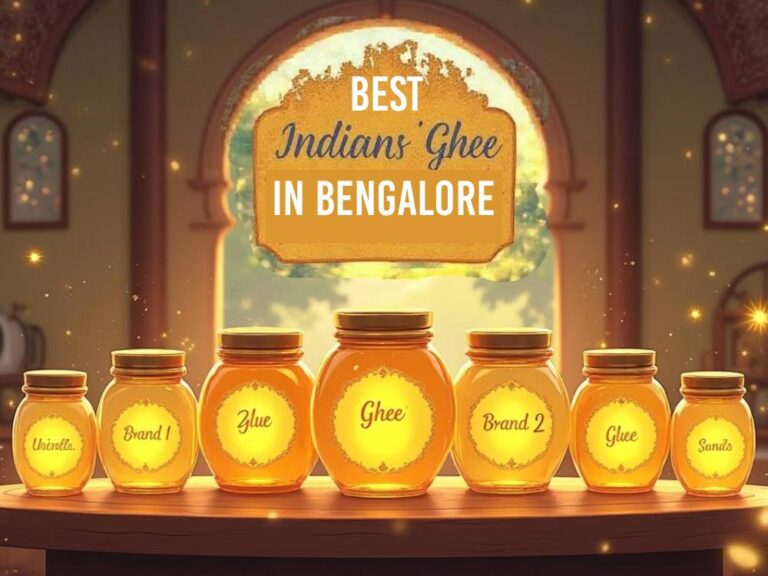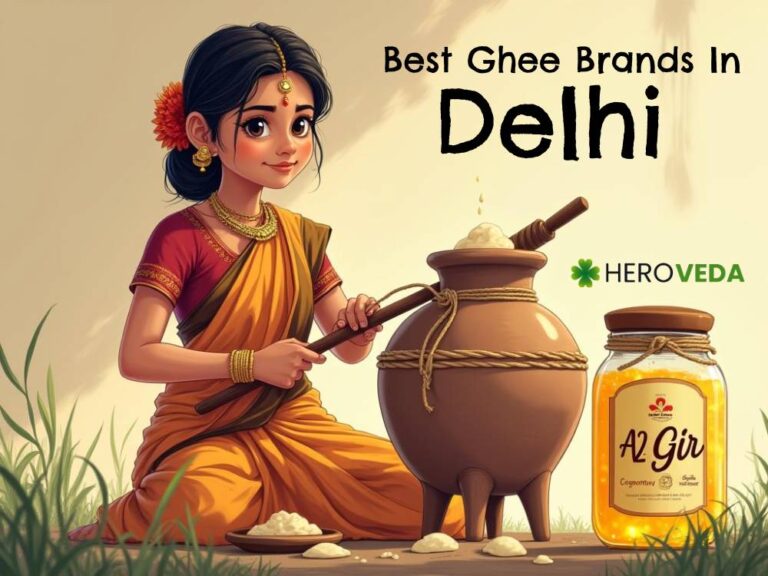Become the Healthiest, Happiest Version of Yourself — Naturally.
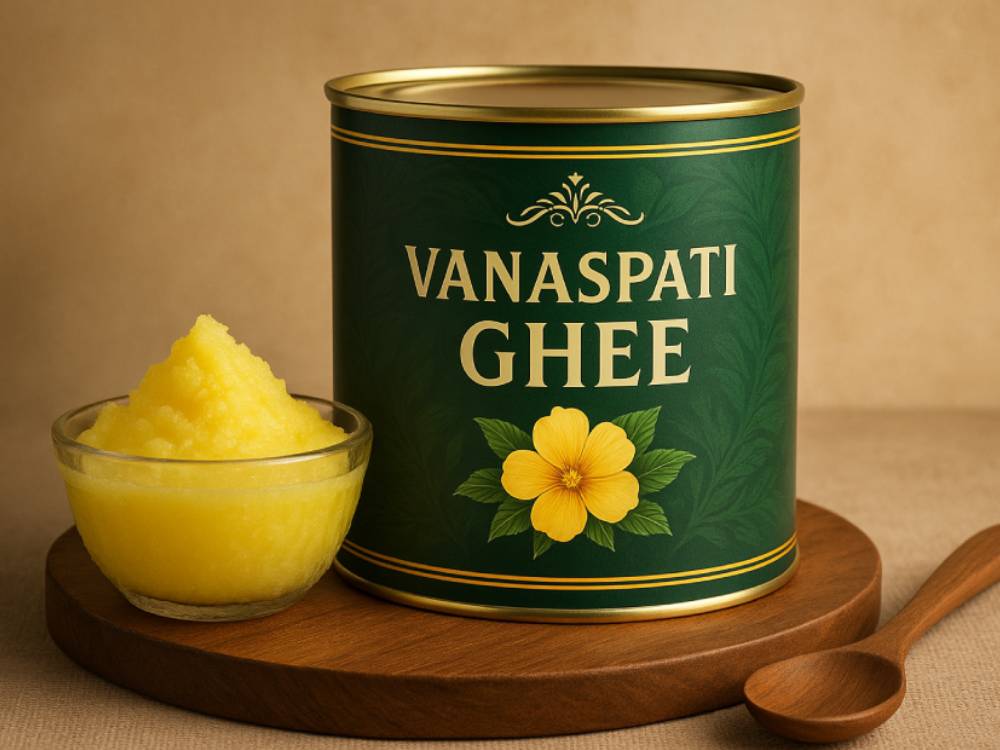
What is Vanaspati Ghee? Here’s Why to Avoid It
When we think about cooking oils in traditional Indian kitchens, “ghee” immediately comes to mind. Apart from its taste, aroma, and nutritional value, ghee has been a staple in the kitchen for centuries.
But have you ever heard of something called Vanaspati Ghee? Despite being called “ghee,” vanaspati is very different and often misleading. In this article, I want to take you on a deep dive into what vanaspati ghee is, why it’s so widely used, and importantly, why you might want to avoid it.
What Is Vanaspati Ghee?
Vanaspati is a type of hydrogenated vegetable oil that is manufactured to have a solid form similar to traditional ghee. The term “vanaspati” literally means “produced from plants” (from Sanskrit: “vana” = forest, “spati” = lord or master), highlighting its plant origin.
It’s often sold as a cheaper alternative to real ghee and is sometimes labeled or marketed as “vanaspati ghee,” which can cause confusion among consumers.
But vanaspati is not natural ghee and not even a dairy product. It’s a chemically processed vegetable fat made to mimic the texture and look of ghee.
How Is Vanaspati Made?
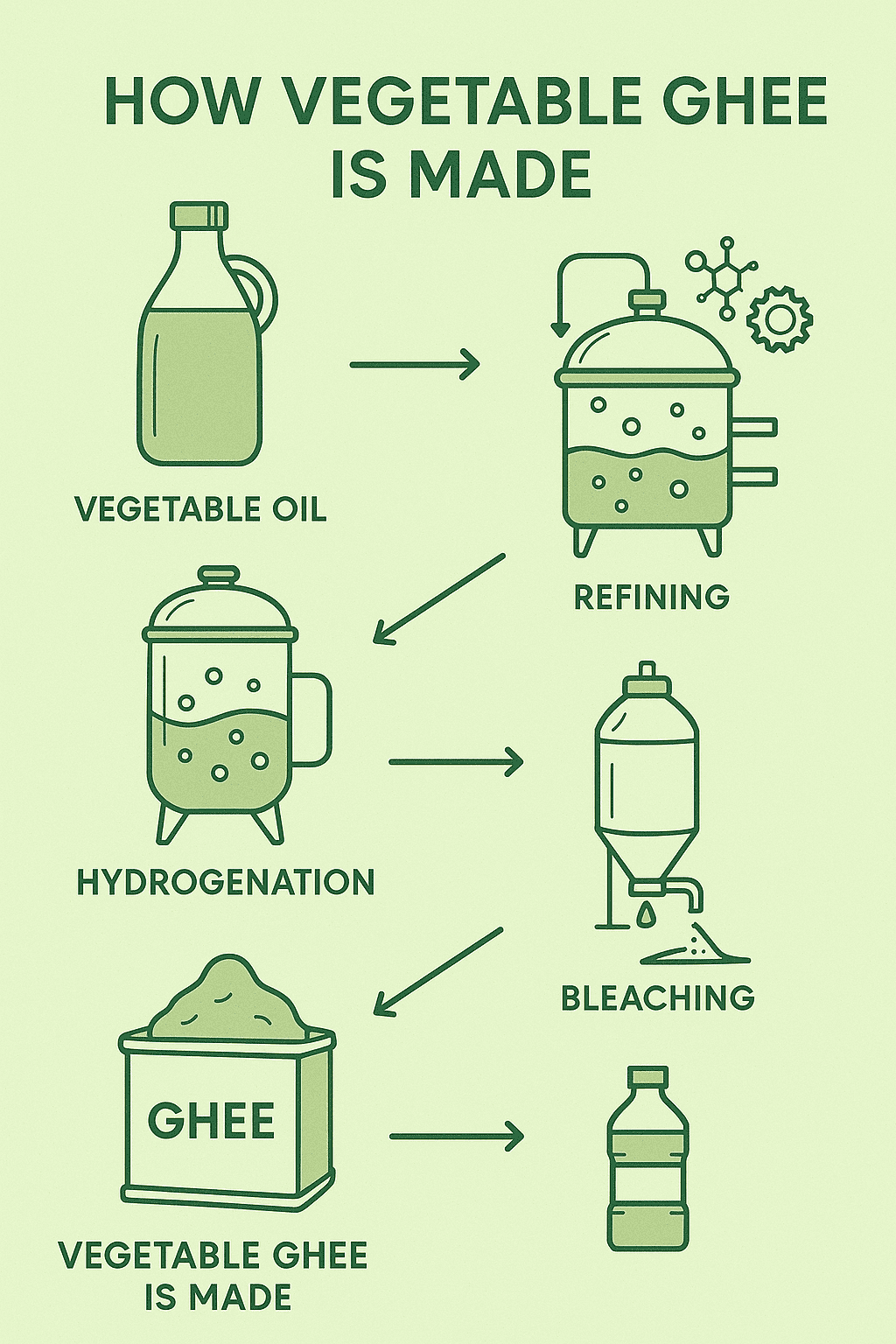
Vanaspati is created through a process called partial hydrogenation of vegetable oils such as palm oil, soybean oil, cottonseed oil, or sunflower oil. Here’s how it works in simple terms:
- Vegetable Oils (which are usually liquid at room temperature) are heated.
- Hydrogen gas is bubbled through the oil under high pressure and temperature.
- This reaction converts unsaturated fats (liquid fats) into saturated fats (solid fats).
- A catalyst like nickel is used to speed up the reaction.
- The result is a semi-solid fat known as vanaspati, which is cheap, shelf-stable, and resembles ghee.
Why Do Manufacturers Use Hydrogenation?
Hydrogenation increases the shelf life and stability of oils, preventing them from turning rancid quickly. It also makes the fat solid or semi-solid at room temperature, which is desirable for cooking purposes and texture in foods.
How Is Vanaspati Different from Real Ghee?
Here’s a quick comparison to clear the confusion:
| Attribute | Real Ghee | Vanaspati Ghee |
|---|---|---|
| Origin | Made by clarifying animal milk butter (usually cow or buffalo) | Made from hydrogenated vegetable oils |
| Processing | Traditional heating and clarification | Industrial hydrogenation and chemical processing |
| Fat Type | Rich in saturated fats from animal sources | Contains trans fats from partial hydrogenation |
| Nutritional Content | Contains fat-soluble vitamins (A, D, E, K) and beneficial fatty acids | Lacks natural vitamins; may contain harmful trans fats |
| Flavor and Aroma | Nutty, rich, buttery aroma | Bland or artificial, lacking natural aroma |
| Health Effects | May support digestion and immunity in moderation | Linked to heart disease and other health risks |
| Price | More expensive | Much cheaper, commonly used in processed foods |
Why Vanaspati Ghee Is Popular Despite Its Problems?
- Cost: Vanaspati is inexpensive compared to genuine ghee or butter, making it attractive for large-scale cooking, bakeries, and street food vendors.
- Shelf Life: It stays solid and usable for a long time without refrigeration.
- Cooking Stability: It can withstand high temperatures without spoiling quickly.
- Misleading Packaging: Sometimes marketed as “vanaspati ghee,” confusing average consumers unfamiliar with the difference.
Health Concerns: Why You Should Avoid Vanaspati Ghee
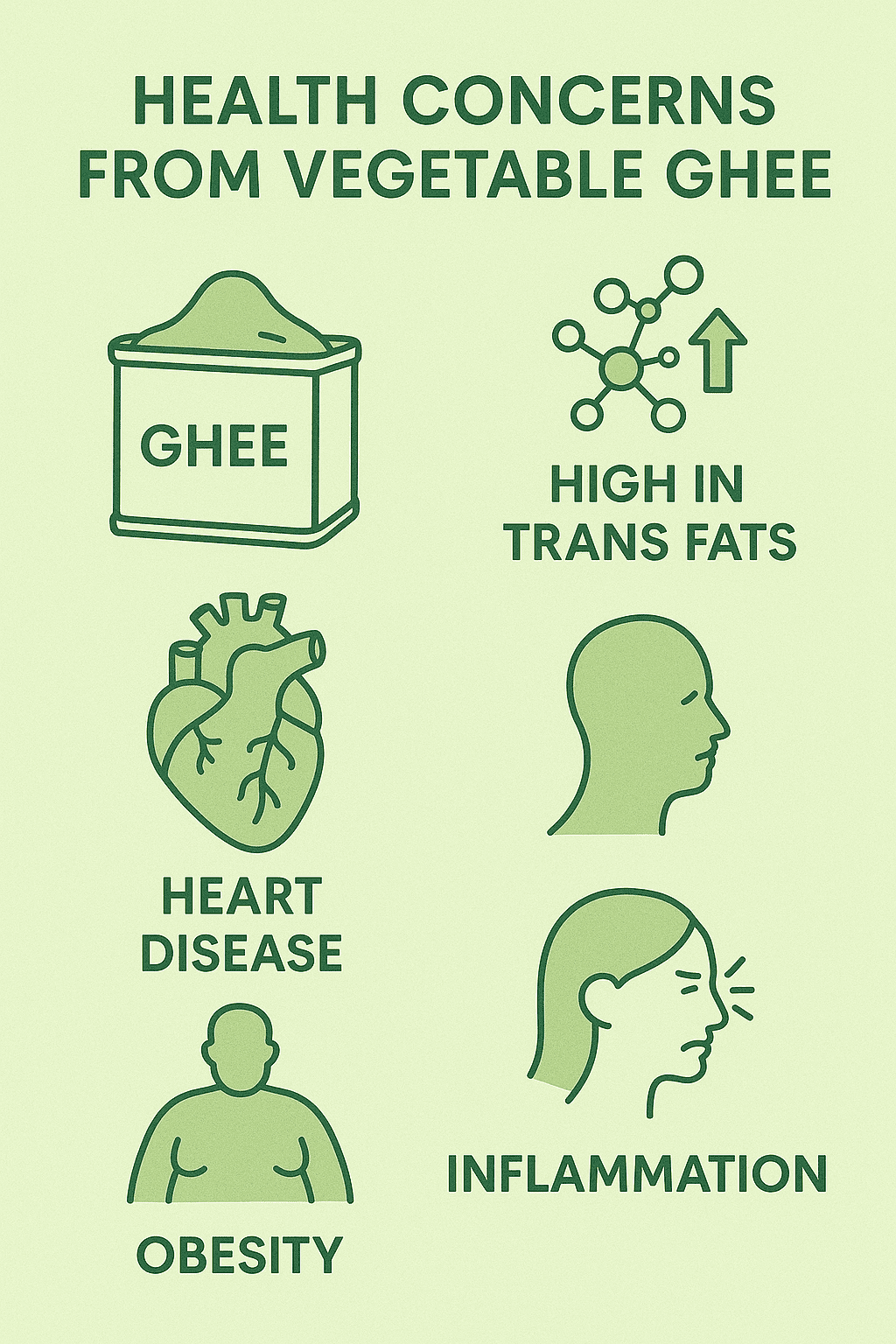
The main reason experts advise against vanaspati is its trans fat content and other unhealthy components created during hydrogenation. Let’s break it down:
1. Trans Fats: The Silent Killer
Partial hydrogenation creates trans fatty acids (trans fats), which:
- Increase bad LDL cholesterol in the blood.
- Decrease good HDL cholesterol.
- Promote inflammation throughout the body.
- Are strongly linked with heart disease, stroke, diabetes, and obesity.
- Have no known safe level of consumption according to health authorities.
2. Lack of Nutrients Compared to Real Ghee
While real ghee contains fat-soluble vitamins like A, D, E, and K which are beneficial, vanaspati is stripped of such nutrients during processing, offering empty calories with harmful fats.
3. Possible Toxic Residues
The manufacturing process can leave traces of nickel and other catalysts or impurities, which are toxic if consumed in large quantities.
4. Increased Risk to Heart and Arteries
Scientific studies show trans fats cause arterial plaque buildup leading to atherosclerosis, increasing the risk of heart attacks.
5. Negative Effects on Pregnancy and Child Development
Consuming trans fats during pregnancy can lead to adverse effects on the developing fetus and even affect breast milk quality.
Also Read: What is Bilona Ghee and its benefits?
What Health Experts Say
Here are some notable quotes from health professionals and organizations:
- The World Health Organization (WHO) has called for a global elimination of industrially-produced trans fats from the food supply.
- Dr. Dariush Mozaffarian, a leading cardiologist, said, “Trans fats are unequivocally harmful and should be eliminated.”
- The American Heart Association (AHA) warns that eating trans fats raises your risk for heart disease and recommends limiting them as much as possible.
How to Identify Vanaspati Ghee?
Since vanaspati can be deceptively packaged, here are tips to spot it:
- Check ingredients: Presence of hydrogenated vegetable oils or partially hydrogenated oils signals vanaspati.
- Look for trans fat content on nutrition labels. Even if labeled zero, check for hydrogenated oils in ingredients.
- Real ghee won’t list these oils but ingredients like clarified butter, milk fat, or butter.
- Price too good to be true? Genuine ghee is costlier.
- Smell test: Real ghee has a rich, nutty aroma; vanaspati smells bland or artificial.
- Texture: Vanaspati is usually more waxy or plasticky.
Healthier Alternatives to Vanaspati Ghee
If you’re looking to cook with healthy fats, here are better options:
| Alternative | Benefits | Suitable Uses |
|---|---|---|
| Real Ghee | Rich in vitamins and antioxidants, supports digestion | Traditional cooking, sautéing |
| Coconut Oil | Medium-chain fats, antimicrobial properties | Baking, cooking, frying |
| Olive Oil | High in monounsaturated fats, heart-healthy | Salad dressings, low-heat cooking |
| Butter (natural) | Contains vitamins and healthy fats | Baking, moderate cooking |
| Avocado Oil | High smoke point, rich in monounsaturated fats | Frying, grilling |
Vanaspati Ghee — Pros and Cons
| Pros | Cons |
|---|---|
| Cheap and widely available | High in harmful trans fats |
| Good shelf life | Raises bad cholesterol, lowers good cholesterol |
| Stable at high temperatures | Linked to heart disease, diabetes, obesity |
| Mimics texture of real ghee | Lacks nutritional value and essential vitamins |
| Used extensively in processed foods | Contains possible toxic residues and chemical contaminants |
Common Myths and Misunderstandings
Myth 1: Vanaspati Is the Same as Ghee
Reality: Vanaspati is processed hydrogenated oil, not a dairy product, unlike ghee.
Myth 2: Vanaspati Is Healthy Because It’s Plant-Based
Reality: Plant-based does not always mean healthy. Hydrogenation creates harmful trans fats, which outweigh any benefit of being plant-sourced.
Myth 3: Vanaspati Has No Trans Fats Because of Labeling
Reality: Some food labels claim 0g trans fats because the amount is below the labeling threshold, but they still contain trans fats.
Why Vanaspati Still Exists?
Despite health warnings, vanaspati remains popular due to:
- Economic factors (cheaper manufacturing and wide availability).
- Lack of consumer awareness about trans fats and hydrogenated oils.
- Usage in processed, packaged, and street foods due to longer shelf life and low cost.
Governments worldwide are recognizing these dangers and implementing regulations limiting trans fats in food, but full elimination is still a work in progress in many countries.
Final Thoughts: Should You Use Vanaspati Ghee?
The short answer: No, you should avoid vanaspati ghee.
It’s an industrial product loaded with unhealthy trans fats that can seriously damage your heart and overall health. While it might be cheaper and readily available, the health risks far outweigh any short-term cost savings.
If you want to enjoy the rich flavor and health benefits associated with ghee, choose real, pure ghee made from natural butter. It is a better choice for your body and your taste buds.
Your health is your greatest wealth, and the fats you cook with play a big role in maintaining it. Make informed choices, read labels carefully, and prioritize quality over convenience.
Frequently Asked Questions About Vanaspati Ghee
Is Vanaspati Ghee Pure Ghee?
Short answer: No, vanaspati ghee is not pure ghee. Vanaspati may look like ghee and sometimes even tries to taste like it, but the similarity ends there. Pure ghee is clarified butter made from milk (either cow or buffalo), while vanaspati is made from hydrogenated vegetable oils. If you see the word “vanaspati” on a label, remember: it’s an imitation, not the real thing.
What Is Vanaspati Ghee Made Of?
Vanaspati ghee is mainly made of partially hydrogenated vegetable oils. This usually includes:
- Palm oil
- Soybean oil
- Sunflower oil
- Cottonseed oil
The hydrogenation process turns these liquid oils into a semi-solid, margarine-like fat, which is then whipped and tinted to resemble real ghee. The resulting product is cheap, shelf-stable—and high in trans fats.
Is Vanaspati Ghee Good for Health?
Unfortunately, it’s not. Vanaspati ghee contains a significant amount of trans fats, which are known to raise bad cholesterol, lower good cholesterol, and increase the risk of heart disease, stroke, and some cancers.
Most international health organizations—including the World Health Organization (WHO) and American Heart Association—advise avoiding trans fats as much as possible.
“There is no safe level of trans-fat consumption.” – WHO
Why Is Vanaspati Ghee Cheaper Than Pure Ghee?
One word: Ingredients. Vegetable oils are far less expensive to produce and process in bulk compared to the cost of churning butter from dairy milk. The hydrogenation process, while industrial, makes it easy to create large quantities of vanaspati, especially using cheaper oil sources, and extend the shelf life without refrigeration.
Is Vanaspati Ghee Banned in Some Countries?
Yes. Many countries have banned or heavily restricted the use of trans fats in foods. While vanaspati itself may not always be specifically named, its main ingredient—partially hydrogenated oil—is falling out of favor worldwide. For example:
- The U.S. FDA removed “generally recognized as safe” status from partially hydrogenated oils in 2015.
- Denmark, Switzerland, and some other European countries have strict trans fat limits.
- India has set limits on trans fats in edible oils and vanaspati, but complete elimination is still a work in progress.
Can You Use Vanaspati Ghee for Frying and Baking?
Yes, you can use vanaspati for frying and baking. It behaves well at high temperatures, thanks to hydrogenation. This is why many street foods, packaged snacks, and bakery items use vanaspati instead of costlier, more perishable fats.
But just because you can doesn’t mean you should. The health costs may not be worth the savings—especially for frequent use in home cooking.
Why Is Vanaspati Still Used in Indian Sweets and Food Outlets?
- Affordability: It’s much cheaper than pure ghee or butter, making it attractive to businesses working with thin profit margins.
- Texture and Shelf Life: Vanaspati helps sweets and snacks retain shape, texture, and freshness longer.
- Lack of Awareness: Many consumers aren’t fully aware of the health implications, and labeling isn’t always clear.
How Can You Tell If Your Food Has Vanaspati?
Here’s how to spot vanaspati in the kitchen or at the store:
- Labels: Look for “hydrogenated vegetable oil” or “vanaspati” in the ingredient list.
- Price: If it’s labeled as ghee but costs significantly less, it’s likely vanaspati or an adulterated product.
- Texture/Aroma: Real ghee is soft, melts easily, and has a distinctive aroma. Vanaspati is waxier and odorless or has an off smell.
- Ask: When eating out or buying sweets, ask if they use pure ghee or vanaspati—don’t be shy!
Can You Make Vanaspati at Home?
No, making vanaspati requires industrial-scale equipment, high-pressure reactors, hydrogen gas, and metal catalysts. It’s not something anyone can—or should—attempt at home.
What Does the “Hydrogenation” Process Do to Vegetable Oil?
Hydrogenation turns liquid vegetable oils into solid fats, changing the molecular structure of fatty acids. This process:
- Increases “shelf life” and stability
- Makes fat solid at room temperature (useful for baking and confectionery)
- Creates trans fats, which are the main health concern associated with vanaspati
Why Do Trans Fats in Vanaspati Harm You? (A Simple Explanation)
Trans fats are artificial fats that your body cannot process normally. They cause:
- Clogged arteries by increasing LDL cholesterol (“bad” cholesterol)
- Lower HDL cholesterol (“good” cholesterol)
- Higher risk of heart attack and stroke, even with small, regular consumption
Vanaspati Ghee Price
Vanaspati ghee is popular largely because of its affordability. The price per kilogram is typically much lower than pure desi ghee, making it attractive for commercial use in homes, hotels, bakeries, and street stalls.
- Example: As of 2025, a 1kg pack of vanaspati ghee in India may cost between ₹130–₹180, while pure ghee of similar quantity can cost ₹450 or more. Local brands and bulk-buying options can bring the per-kg price down further.
| Product | Approximate Price (₹/kg) |
|---|---|
| Vanaspati Ghee | 130–180 |
| Pure Desi Ghee | 450–600 |
Always compare brands and read ingredient lists before buying.
Vanaspati Ghee in English
The English term for “Vanaspati Ghee” is usually hydrogenated vegetable oil or sometimes vegetable shortening.
- The word “ghee” in India refers to clarified butter, but “Vanaspati” denotes a butter-like fat derived from plant oils, not dairy—so in English, calling it “vanaspati” or “vanaspati hydrogenated fat” is most accurate.
Vanaspati Ghee Benefits
While vanaspati is chosen for economic reasons, the perceived benefits are largely practical, not nutritional:
- Affordable: Cheaper than dairy ghee, good for bulk use.
- Shelf-Stable: Lasts long without refrigeration.
- Cooking: Heat-stable and versatile for deep-frying, baking, etc.
But: Health experts strongly warn that these “benefits” are outweighed by the harmful effects of trans fats and lack of essential nutrients.
Is Vanaspati Ghee Bad for Health
Yes, vanaspati ghee is considered harmful for health by modern nutrition science. The key reasons are:
- High in trans fats: Raises LDL (“bad”) cholesterol and lowers HDL (“good”) cholesterol.
- Linked to heart disease: Increases risk of heart attacks and strokes.
- Lacks nutrients: No natural vitamins A, D, E, or K like in traditional ghee.
- Possible metal residues: Industrial catalysts used in manufacturing can leave traces.
In summary, vanaspati ghee’s health risks far outweigh any low-cost advantages.
Vanaspati Ghee Price 15 kg
For bulk buyers (hotels, caterers, businesses), vanaspati ghee is sold in large tins, often 15 kg packs.
- Typical 15 kg price: ₹2,000–₹2,700 (can vary by brand and city).
- This is much cheaper per kg than pure ghee, emphasizing why it’s widely used in commercial food production.
Why Is Vanaspati Used in Indian Sweets?
For cost efficiency and shelf-life. It creates the right texture for many sweets but at the cost of flavor and nutrition.

